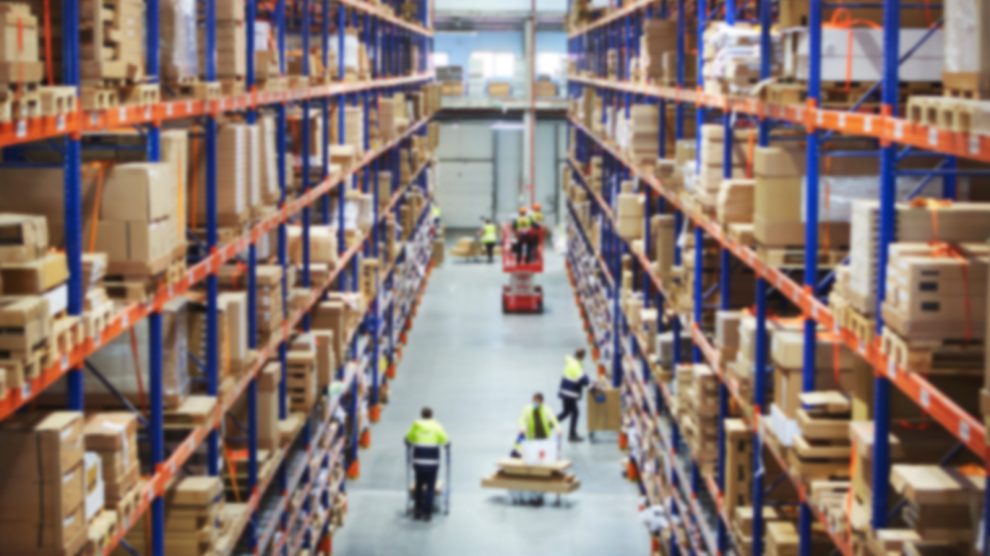Fuelled by the meteoric rise of e-commerce, modern warehouses double as logistics and production centres with one overarching goal: to ensure buyers receive their goods as quickly as possible.
Many e-commerce businesses purchase products in bulk and store them in strategic locations to reduce delivery times and shipping costs. When an end customer places an order from an e-commerce website, the company dispatches the product directly from a local distribution centre.
- Office space of the future: Flexible and tech-driven
- The West should already be planning how to finance Ukraine’s reconstruction
- Ukraine’s MIPIM message: Keep doing business with us
For this reason, warehouses need to be designed not only for compact storage, but also for efficient product picking, packing and shipping. Unlike the storage facilities of old, they are bustling, highly automated and robotised environments.
During this year’s MIPIM, the world’s most important real estate event held in Cannes from March 15-18, we spoke with warehousing experts to understand how the e-commerce landscape in Central and Eastern Europe was changing in the wake of the Covid-19 pandemic.
Closer to the customer
One of the companies exhibiting at MIPIM was Panattoni, the largest logistics developer in Europe. Robert Dobrzycki, Panattoni’s CEO and co-owner, told us that the key survival skill for warehousing companies was to stay flexible and adapt to the fast-changing market trends and expectations of customers.
“Our reality is changing quickly,” Dobrzycki said. “To achieve a competitive advantage, one has to be flexible and follow the customer. When logistics companies and warehousing processes change, we need to change along with them.”
Rather than as a vague statement about corporate attitudes, Dobrzycki explained that this remark was to be taken in literal, geographical terms.
“It is necessary to bring online shops and courier companies as close as possible to the final customer. This means building sorting centres within city limits and modern industrial space appearing in smaller centres, often with less than 100,000 inhabitants,” Dobrzycki added.
Kadi Metsmaa, CEO of Tallinn’s Esplan, said that similar dynamics could be seen in the Estonian market, and that the same rule also applied to many other parts of the supply chain.
“Air transportation of people fell off a cliff at the start of the pandemic, but during that same time there was a massive increase in terms of transportation of goods by air,” Metsmaa claimed. “For more and more buyers these days, other means of goods transportation such as cargo ships are just too slow.”
Up to date in the Baltics
South of Estonia, the other two Baltic states are also making strides in terms of their warehousing and logistics standards.
Lukas Geležauskas, a real estate developer at Lithuania’s SBA Urban, told us that his company was building a 120,000 square metre multi-functional campus in Riga as the socio-economic climate in Latvia was just too favourable to ignore.
“Latvia’s infrastructural emphasis on IT will pay huge dividends in the future, as I’m sure many companies will see this as a huge advantage,” Geležauskas told Emerging Europe.
Meanwhile on his home soil in Kaunas, SBA Urban is developing a state-of-the-art e-commerce hub. The complex will fully adhere to SBA’s cornerstone principles of sustainability, environmental cohesion and minimisation of the carbon footprint.
“We are offering businesses an opportunity to reside in a modern complex the size of 10 football fields, right next to Via Baltica, Lithuania’s busiest road. We are establishing a fully-developed e-commerce ecosystem, allowing companies to receive, store and distribute goods, and to serve clients in person,” said Lionginas Šepetys, board chairman of SBA Urban.
The company is following in its own footsteps, having previously built a logistics centre recognised as the greenest warehouse and production facility in the Baltics.
An eye-catcher on the motorway to or from Klaipėda, the SBA Industrial Innovation Valley uses only green electricity generated from renewable sources, has a smart lighting system and generates heat through an air-to-air system. The building’s smoothly rising façade blends in with the surroundings, while its greenery-filled roof saves energy for heating and cooling.
Good prospects
As well as becoming more sustainable, according to Panattoni’s Dobrzycki warehouse facilities in the region are also becoming larger. Their height can exceed 25 metres, and the investment itself is often divided into three or four storeys to make the most effective use of the building’s cubature.
“The shortage of land and its prices will foster further creativity in the sector,” said Dobrzycki. “We can already see more and more multi-storey buildings, and this will be a trend. So will the development of brownfield sites or the repurposing of existing buildings.”
Warehouses are now fitted with the latest technology and increasingly advanced management systems, not to mention thousands of transport robots.
“Further robotisation and automation of warehouse processes is inevitable. Let us also remember the opportunities offered in this field by artificial intelligence, the Internet of Things and the massive use of 3D printing technology,” Dobrzycki added.
Turnaround time in e-commerce has never looked more promising.
Unlike many news and information platforms, Emerging Europe is free to read, and always will be. There is no paywall here. We are independent, not affiliated with nor representing any political party or business organisation. We want the very best for emerging Europe, nothing more, nothing less. Your support will help us continue to spread the word about this amazing region.
You can contribute here. Thank you.




Add Comment